Treasury Clearing Documentation Training Seminar
Join SIFMA and Cleary Gottlieb in New York City for a half-day deep dive technical training seminar to equip financial…

12:00pm – 5:00pm
Mobile App Sponsored by Pershing LLC, a BNY Mellon Company
Registration will take place at all SII hotel properties. For participants staying at the Philadelphia Marriott registration will remain open until 6:00pm. If you are not staying at an SII hotel property, your registration materials can be picked up at the Philadelphia Marriott prior to the Welcome Reception and Opening Night Dinner.
5:30pm – 6:15pm
Located at the Philadelphia Marriott Downtown
6:15pm – 8:15pm
Located at the Philadelphia Marriott Downtown
Welcoming Remarks
Erica Snyder
Vice-Chair, Securities Industry Institute
James R. Allen
SIFMA Chair
Chairman & Chief Executive Officer
J.J.B. Hilliard, W.L. Lyons, LLC
Dinner Speaker
Liz Scott
Co-Executive Director
Alex’s Lemonade Stand Foundation
Alex’s Lemonade Stand Foundation
Mission: To change the lives of children with cancer through funding impactful research, raising awareness, supporting families, and empowering everyone to help cure childhood cancer.
When Alex, who was diagnosed with childhood cancer just before her first birthday, was four, she told her parents she wanted to set up a front-yard lemonade stand. Her plan: to give the money to doctors to help them find a cure. Her first “Alex’s Lemonade Stand”, held with the help of her older brother Patrick, raised an astonishing $2,000 in one day. While bravely fighting her own cancer, Alex continued to set up lemonade stands every year. As news spread of the remarkable girl so dedicated to helping other sick children, people everywhere were inspired to start their own lemonade stands—donating the proceeds to her cause. In 2004 when Alex passed away at the age of eight—her stand and inspiration had raised more than $1 million towards finding a cure for the disease that took her life. Alex’s Lemonade Stand Foundation was started by her parents in 2005 to continue the work that Alex began. Our mission is simple: to change the lives of children with cancer through funding impactful research, raising awareness, supporting families, and empowering everyone to help cure childhood cancer.
James R. Allen, Liz Scott
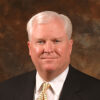

7:15am – 8:15am
Breakfast will be served at all SII hotel properties.
8:45am – 10:15am
Book Sponsored by Hilltop Holdings, Inc.
The fastest way to change the feedback culture in any organization is to teach leaders to become better feedback receivers. Honest feedback is a challenge in organizations around the world, and the usual response – teaching leaders how to give feedback more effectively – has failed to solve the problem. Heen turns conventional wisdom on its head and demonstrates why the smart money is on teaching leaders the dark art of learning about themselves. Receiving feedback – particularly for smart, experienced professionals – is a distinct leadership skill. Sheila’s warmth and authenticity helps even seasoned executives recognize our own (normal, human) triggered reactions to feedback — “that’s just wrong,” “who asked you?” “I’m not the real problem here” — and she offers practical advice for turning even unskilled, crazy-making feedback into genuine learning. And once you get leaders motivated and eager to learn — willing to engage with others to see their blind spots and look at their own areas for growth — you get a modeling effect that quickly catches fire.
Sheila Heen

10:35am – 12:05pm
CIMA®, CPWA®, CIMC®, and RMA℠ Eligible
The key to a company’s financial success is strategy execution. Companies that have success in long term value creation have a passion for execution. This session will use financial tools to analyze the differences between value creating and value destroying companies and show that the pattern is the same in every industry and in every part of the world. At the strategy formulation stage, it is important to select a strategy that the company has the capabilities to execute more effectively than completion. It is important to realize that profitability is wonderful but it is very fragile and it can disappear rapidly. It is important to be vigilant about the changes taking place in your industry.
Learning Objectives:
Joseph Perfetti

12:30pm – 1:15pm
(35 capacity for each year, limit 2 per person)
At 92 million strong, Millennials are the largest generation and the future of business, both as consumers and as the heart of the new workforce. However, they have sharply different attitudes and expectations than previous generations. Millennials have grown up as digital natives in a rapidly changing world that endured a generation-defining recession. This lunch lecture will explore Millennials as consumers, investors, and employees. Discussion will center on Millennials’ attitudes, psychology, and decision-making. We will also explore various segmentations and differences among Millennials, as well as contrasting them to the up-and-coming Generation Z.
Keith E. Niedermeier

(35 capacity for each year, limit 2 per person)
Financially well-designed business plans often run aground in the implementation phase because of the difficulty in bringing people on board. The phrase “culture eats strategy for breakfast” has been widely used by CEOs to describe this program. But what exactly is “culture” and what role does it play in business operations. Participants in this session will: Gain familiarity with the latest theories about culture, and come to recognize the various manifestations and impacts of culture in corporate settings; Appreciate why corporations, as social groupings, not only rapidly develop distinctive culture that resist change, but are often internally riven by culture differences; Learn about the interconnections between the culture inside corporations and the external cultures at the local, national and international levels in which corporations are embedded. Culture is not only about the past and resistance to change, however, it is also itself a source of inspiration for change. Participants in the session will begin to explore the forces that affect the motion of culture through space and time, coming to appreciate the ways in which corporate leaders can affect the future trajectories of culture.
Greg Urban

(35 capacity for each year, limit 2 per person)
Gallup’s Strengths-Based Approach to Leadership will offer insights into how you can lead your people to achieve high performance and exceed their goals. The foundation of a Strengths-Based Approach is understanding your strengths as leader, which you’ll experience through the Gallup CliftonStrengths Finder assessment – taken prior to the session and with results available to you upon completion of the assessment. With your unique Strengths as a guide, the session will empower you to build on what you do great today – your strengths – and apply new ways of leading and managing your teams. You’ll leave the session with an understanding of how you can leverage and apply your Strengths every day.
Sponsored by TD Ameritrade
Andrew Robertson

1:30pm – 3:00pm
CIMA®, CPWA®, CIMC®, and RMA℠ Eligible
This session starts with the premise that people’s decisions/choices are heavily influenced by how those choices are presented or described. We then step through four principles (and eight lessons) on how to present choice options in a way that gets people to choose what you want them to choose.
Joseph Simmons

CIMA®, CPWA®, CIMC®, and RMA℠ Eligible
(Also offered Wednesday at 3:20pm)
Do you prefer to communicate directly, emphasize facts over feelings? Are you more animated in your delivery? Do you take your listener’s feelings into account? Do you like to think first and then speak? Whatever your preference, what impact does your communication style have on others in the workplace whether one-on-one or in group meetings? How can you make the most of assets and downplay the liabilities of your communication style? Complete the HRDQ What’s My Communication Style questionnaire as pre-work, and this session will help you identify your dominant communication style and give you the opportunity to see your style in action so that you can make the most of assets and downplay liabilities. By the end of the session, you will have a greater appreciation of the impact of communication style on interpersonal relationships and results.
Learning Objectives:
Anne Greenhalgh

CFP®, CIMA®, CPWA®, CIMC®, and RMA℠ Eligible
This course provides participants with in-depth perspective about the key elements of the portfolio construction process from consumer’s point-of-view. A case study is used to guide the learning and discussion. Participants will learn the critical elements necessary to be a highly-informed consumer of portfolios.
Learning Objectives:
Participants will be required to read a Yale University case study prior to the session.
Jim Steiner
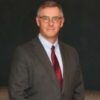
CIMA®, CPWA®, CIMC®, and RMA℠ Eligible
(Also offered Monday at 3:20pm)
We are observing a current trend that has the potential to fundamentally transform a range of industries. Rather than having episodic interactions with customers, firms connect to customers in a continuous way, providing services and products as the needs of customers arise. Consider a few examples: Healthcare providers are moving from having only interactions when an urgent need arises to a “connected healthcare” model with continuous monitoring of patients. Software is increasingly moving from being installed on computers to software-as-a-service, and even the educational system is questioning whether spending multiple years on-campus can be replaced by providing students the required knowledge when needed, e.g., through on-line learning modules. At the same time, many firms are changing how suppliers are connected to customers. Firms such as Kickstarter, Venmo, Uber, and Airbnb, create connections, and thereby markets, where none had existed before. Most of these innovations are “business model” innovations that rely on recent technological advances. We identify how these new business models create value and categorize them into different models. We discuss the implications for both new entrants and existing firms in these industries.
Learning Objectives:
Nicolaj Siggelkow

Design Thinking describes a set of processes and techniques that designers use to solve complex problems and invent new products, services, businesses or systems. The session will introduce the basic elements of design thinking, including empathy, ideation, and iteration and provide examples of how to use those techniques to develop new products and identify new business opportunities. Participants will learn a human-centered approach for generating and evaluating new ideas and will identify opportunities to apply that process in their daily work.
Learning Objectives:
Sarah Rottenberg

CFP®, CIMA®, CPWA®, CIMC®, and RMA℠ Eligible
Impact and ESG investing has skyrocketed in popularity with investors worldwide. But many people don’t realize how wide-ranging these disciplines have become. Twenty years ago it was stock or occasionally other portfolios which screened companies in or out based on their social investing characteristics. Today, ESG and social-impact oriented strategies include new products and asset classes, influencing corporate governance through shareholder activism, Corporate Social Responsibility, Donor-Advised Funds, and bold for-profit approaches to helping the poor in the developing world.
This session provides an overview of the most important ESG and impact-investing concepts and styles and a look at whether investment return need be sacrificed for social benefit. It offers a high-level view of the products and strategies now permeating not only institutional, but retail investing as well.
Christopher Geczy

CFP®, CIMA®, CPWA®, CIMC®, and RMA℠ Eligible
It’s been ten years now and quite a bit has been written of the impact this event had on the global economy as well as the U.S. — some even ascribe President Trump’s rise to it (seeing his candidacy as reaction to the crisis from both the right and the left. The new laws and then regulations that followed, principally driven by The Dodd-Frank Act, have been largely implemented, but to what effect? And there’s a growing cacophony of voices saying another bust might occur.
Paul Tiffany
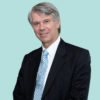
In the bestselling book, In Search of Excellence: Lessons from America’s Best Run Companies (Peters), 43 “best-in-class” companies were profiled some 35 years ago. Of the 32 public-traded entities, only eight subsequently surpassed the growth rates of their peer group while six disappeared in the intervening years—and these were the “best-run” companies! In the decade after Built to Last (Collins) was published, 8 of the profiled 18 companies were in trouble, growing slower than their peer group. As Steve Lohr writes in an article on Microsoft, “One of the evolutionary laws of business is that success breeds failure; the tactics and habits of earlier triumphs so often leave companies–even the biggest, most profitable and most admired companies–unable to adapt.” Clearly, sustained competitive advantage, Michael Porter’s definition of “strategy”, is difficult to attain. In this highly interactive seminar, Mr. Austin will outline key frameworks for identifying innovative, new avenues for growth.
Learning Objectives:
Jim Austin

(Also offered Wednesday at 8:45am and 1:30pm)
The Negotiation Workshop is fun and very interactive. It will utilize simulations to highlight key concepts and skills. Participants will conduct mock negotiations and then discuss what occurred. The workshop is intended for those who would like to improve their negotiation skills as well as those who are already accomplished negotiators.
Learning Objectives:
Eric Max

Ideal for: Sales and sales management professionals, financial advisors, and wealth managers seeking to strengthen personal and corporate brand to gain more customers.
This session focuses on establishing brand and reputational awareness, creating a differentiated value proposition, and understanding brand positioning. We will also touch on client psychology and segmentation. The goal is to understand and analyze brand as a key element needed to build an actionable marketing plan for you and your team.
Learning Objectives:
Keith E. Niedermeier

1:30pm – 4:50pm
(Also offered on Wednesday)
Recent academic work on the science of innovation and creativity has revealed a new, evidence-based approach to coming up with new ideas and solving problems – but it is one that is not widely known outside of academia! In this session, we will first discuss these new approaches to innovating, including a number of simple tips and common mistakes. Then, in the second half of the session, you will play the Breakthrough Game, which allows you to apply the tools you learned to use in a fun and engaging way. Playing the Breakthrough Game, participants not only solve one particular challenge as a team but also, crucially, learn how to drive the innovation process in the future. You will come out of this session with short-term takeaways that will make your future idea generation sessions more productive, an actionable idea that you can pursue, and a general framework that you can use to solve problems and search for new opportunities.
Ethan Mollick

DISRUPT BY DESIGN™ is a more in-depth exploration of the core capabilities and conditions that leaders cultivate to make strategic, creative and design thinking behavior translate into business, customer and organizational innovation. The course is a playful, practical and easy-to-use approach to helping leaders and entrepreneurs create a culture of innovation and achieve breakthrough results more consistently.
We live in a complex world with many challenges that are calling for an innovative response. None of these challenges lend themselves to easy or quick solutions. DISRUPT BY DESIGN™ is an approach to leadership and new ventures that considers the relationship between the individual parts of an organizational system (internal and external perspective) and how the actors (customers, regulators, suppliers, workforce, etc.) can be best combined and leveraged to achieve disruptive and fast breakthroughs.
The good news is that DISRUPT BY DESIGN™ is a learned behavior and mindset that will help breakthroughs become more frequent, ideas be more impactful and commercial success more likely. When leaders take a strategic pause and immerse themselves, for instance, in the experience a customer may have with their company’s products, the leader(s) are more apt to identify unmet needs and generate opportunities for innovation.
Learning Objectives:
Learning Modules:
Andrew Pek

Over 70% of history’s most transformative innovation came from employees, not entrepreneurs. Employees are the number one source of innovative growth options and the only remaining source of true competitive advantage. Arming them with the skills and tools necessary to innovate on a continual basis is of paramount importance to organizational survival. Discover how to overcome the key barriers and activate essential drivers of innovation inside large companies. Based on three years of research involving more than 150 interviews with internal innovators, experts, and CEOs, and Kaihan’s analysis of the most transformative innovations of the last three decades, this workshop is a must for leaders and employees that recognize the need for innovation and want to increase the rate at which they are able to experiment with and land fresh ideas in their company.
This workshop will lay out a set of practical tools and frameworks for navigating the innovation journey and activating innovation from within any established organization, based on Dr. Kaihan Krippendorff’s next book, Innovate from Within: Change the World without Quitting your Job (Columbia University Press, 2019). You’ll get exclusive access Outthinker research of internal innovators and the impact of Intrapreneurial Intensity. You will learn a repeatable approach (The IN–OVATE Framework) to landing innovative ideas in a company and a toolset that will enable you to identify the most relevant barriers that you need to focus on now to advance an idea in an organization.
The IN-OVATE Framework
Intent – Which of three beliefs are holding you or your team back from pursuing innovation?
Need – How to accurately identify which types of innovations the market needs and your organization will embrace?
Options – How to trigger more disruptive thinking as you generate innovative solutions?
Value blockers – How to predict where your current business model will conflict with your idea to reduce the rejection rate of your idea by your organization?
Act – Why writing a business plan puts your idea at risk and how to embrace an agile, act-learn-build approach.
Team – Can you assemble a cross-functional team that has the right attributes needed to ramp up the innovation up quickly?
Environment– Can you manage the four macro organizational environmental factors to create an island of freedom?
This is not just theory. You will immediately practice the tools and approach on business cases or your own business challenge. This will lay a foundation for you to act innovatively and entrepreneurially inside of any organization. It will boost your confidence and reinforce the idea that innovation from within is possible, attainable, and ultimately actionable.
Learning Objectives:
Kaihan Krippendorff

Emotional Intelligence (EI) is a critical component for effective leadership and a significant contributor to excelling in the workplace. The good news is, regardless of one’s starting point, we can improve EI skills and abilities by thinking intelligently about emotions and using emotions to better think intelligently. To this end, using exercises and clips, participants engage in learning, practicing, and improving each of the EI components, with the goal of better understanding how to improve reading, engaging and leading oneself and others for the long term.
Learning Objectives:
Dafna Eylon

(Also offered on Wednesday)
This workshop will help strengthen your influence and persuasion skills — skills you need to win support for important initiatives, achieve organizational alignment, and implement strategies. Through a series of interactive discussions and role-plays, you will answer four key questions: What are the steps that led to buy-in? What is your communication style and how do you use to engage stakeholders? How do you make your ideas simple and compelling? How do you generate lasting commitment? The workshop content is drawn from the book The Art of Woo: Using Strategic Persuasion to Sell Your Ideas (Portfolio/Penguin), co-authored by G. Richard Shell and Mario Moussa.
Learning Objectives:
Participants will be asked to complete a survey and to read a chapter of “The Art of Woo” prior to attending this session.
Mario Moussa
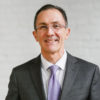
3:20pm – 4:50pm
CIMA®, CPWA®, CIMC®, and RMA℠ Eligible
(Also offered Wednesday at 3:20pm)
In this experiential session, participants will discover techniques to improve their collaborative relationships. The session explores practical, applicable skills for increasing the ability to effectively communicate with others — to hear and be heard. The atmosphere of the session is lighthearted and fun, utilizing activities developed from traditional and non-traditional training methodology, including exercises based in improvisational theater training. No one is singled out — all exercises are performed in large or small groups. The facilitator creates a comfortable atmosphere in which all participants are supported and encouraged. Every exercise has a specific objective and will be debriefed to maximize its application to the participants’ business-place needs.
Learning Objectives:
Bobbi Block

CIMA®, CPWA®, CIMC®, and RMA℠ Eligible
(Also offered Monday at 1:30pm)
We are observing a current trend that has the potential to fundamentally transform a range of industries. Rather than having episodic interactions with customers, firms connect to customers in a continuous way, providing services and products as the needs of customers arise. Consider a few examples: Healthcare providers are moving from having only interactions when an urgent need arises to a “connected healthcare” model with continuous monitoring of patients. Software is increasingly moving from being installed on computers to software-as-a-service, and even the educational system is questioning whether spending multiple years on-campus can be replaced by providing students the required knowledge when needed, e.g., through on-line learning modules. At the same time, many firms are changing how suppliers are connected to customers. Firms such as Kickstarter, Venmo, Uber, and Airbnb, create connections, and thereby markets, where none had existed before. Most of these innovations are “business model” innovations that rely on recent technological advances. We identify how these new business models create value and categorize them into different models. We discuss the implications for both new entrants and existing firms in these industries.
Learning Objectives:
Nicolaj Siggelkow

(Also offered Wednesday at 3:20pm)
High performance requires effective execution and, for many organizations, change management. Unfortunately, major change efforts have a dismal track record. In multiple studies, highlighting the experiences of hundreds of companies initiating large-scale changes, the overwhelming results are poor. For example:
As the Harvard Business Review’s editor articulated so well in discussing why so many transformation efforts fail:
“…no business survives over the long term if it can’t reinvent itself. But human nature being what it is, fundamental change is often resisted mightily by the people it most affects: those in the trenches of the business. Thus, leading change is both absolutely essential and incredibly difficult” (Kotter 2007).
Learning Objectives:
Jim Austin

CFP®, CIMA®, CPWA®, CIMC®, and RMA℠ Eligible
(Also offered Wednesday at 8:45am)
The US elections of both 2016 and 2018 have created a potentially massive shift in American policy, both domestic and global. The question now is how permanent the changes will become. In the international arena President Trump staked out positions radically different from those of the post-World War II “Washington Consensus,” that guided much of the world as “globalization” took hold and Emerging Nations—especially China– prospered. The result has been uncertainty for political and economic decision-makers worldwide. Will a “New World Order” of “economic nationalism” now follow, perhaps one that leaves lasting impact on the shape of trade relations for generations to come? Or will Trumpism result in only a brief deviation from the liberalization of trade (and global politics) of the recent past? This session will explore recent upheavals in the world economy that have led to the current challenge, focusing on the major geographic regions and their issues and problems. We will conclude with a consideration of potential outcomes for the years ahead, and what implications they hold for both US firms as well as its citizens in the era of President Trump. Participant discussion will be strongly encouraged.
Learning Objectives:
Paul Tiffany

Growth with no regard to customer interests is easy. Growth with only customer interests in mind is also easy. What is not easy is to find and capitalize on a growth opportunity that satisfy both the firm’s profitability requirement and customer interests. However, identifying such an opportunity and capitalizing on it are made easy if one knows where and how to look. This session will propose a new growth analytics based on the concept of “Marketing Profitability” pioneered by Professor Z. John Zhang and his co-authors and suggest a framework for identifying and capturing organic growth opportunities. By measuring profitability while keeping customers in sight, this metric has, as the session will illustrate, allowed firms to generate uncommon customer insights and spawned many new, actionable growth objectives. These objectives include increasing “Dollar Wallet Share” in banking and financial services, “share of stomach” in the fast food industry, “share of liquid intake” in the beverage industry, “share of solutions” in the hi-tech industry…
Z. John Zhang
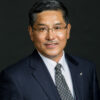
True presence is a highly-sought after and crucially important skill for the modern executive. Successful leaders in every field have that rare combination of confidence, charisma, self-awareness and inspiration. Easily seen and difficult to describe, stage presence or leadership presence is an attribute that we all feel is something which would make us better leaders. It is the ability to authentically connect with and engage audiences. Presence is a skill that we need in one-on-one encounters as well as when presenting to 1000 people. True presence allows us to read the room and to lift audiences away from the many distractions that are a part of everyday life in order to inspire, persuade and build momentum toward a strong vision. It brings people from the ordinary into the extraordinary. While some might argue that presence is an innate quality, this workshop will prove otherwise as we demystify the building blocks of presence and train ourselves to strengthen our own engagement with audiences. By learning to be more “present,” participants will understand how to be more motivational as a leader, more convincing as a negotiator and more open and honest as a team member. This workshop develops a practical toolkit for leaders to continue working on their presence and their ability to communicate their vision and their story long after the workshop has ended.
Learning Objectives:
Quinn Bauriedel

CFP®,CIMA®, CPWA®, CIMC®, and RMA℠ Eligible
This is a session that covers recent developments in global economic growth and innovation, with an emphasis on current events and policy applications. The session discusses the current drivers of innovation and economic growth and analyzes the strengths and challenges of financial analysis for long-term innovative investment decisions. Topics covered include: national income accounting, total factor productivity, investment in capital and labor, inflation, interest rates, monetary policy, net present value and the internal rate of return.
Learning Objectives:
Jules Van Binsbergen

CIMA®, CPWA®, CIMC®, and RMA℠ Eligible
Individuals are motivated by forces beyond the financial incentives typically used to encourage behavior. Individuals donate, vote, volunteer, and put in extra effort to benefit their coworkers and employers, even when there is no financial reward for doing so. What motivates this behavior? In this session, we will explore the non-monetary incentives that drive individuals’ decision making and consider how such forces can be used to encourage behavior in a variety of domains. Participants will develop an understanding of the internal and interpersonal forces that lead people to make costly sacrifices and be exposed to the numerous persuasion strategies that have been developed to encourage people to do so. Learning Objectives: Introduce a variety of non-monetary incentives that encourage behavior and explain why they are effective; Improve participants’ ability to recognize the use of non-monetary incentives; Help participants recognize where they can apply non-monetary incentives themselves.
Judd Kessler

CIMA®, CPWA®, CIMC®, and RMA℠ Eligible
Ideal for: General Audience
Your reputation precedes you. How do others see you at work? Are you perceived as cool, calm, and collected? Emotionally expressive? Competitive? A team player? Sociable? Independent? A people person? Task-focused? Conscientious? Willing to take a risk? Imaginative? Practical? Do you seem to prefer formal education or hands-on learning? How do these perceptions about you play out when you face an issue, problem, or adversity at work? What consequences do they have for better or worse? Complete the Hogan Personality Inventory as pre-work, and this session will give you the opportunity to see yourself as others see you, reflect on your strengths, and consider how to make the most of strengths and downplay liabilities.
Learning Objectives:
Anne Greenhalgh

The effectiveness of any organization depends on its ability to have the right people in the right jobs at the right time, equipped with the right skills. Some organizations have been much better at doing this than others. This session examines some of the practices and behaviors necessary to develop high performing talent within a firm. We outline the set of practices that are performed by organizations that are highly successful in developing talent. We then discuss the barriers that participants find to effective talent management in their own organizations. We conclude with some thoughts on what makes for effective development as part of talent management.
Learning Objectives:
Matthew Bidwell

Ideal for: General Audience
Leadership isn’t just about business, it’s about life. Today’s business environment demands that leaders at all levels find better ways to align their vision, values, and everyday actions to perform well not only at work but also at home, in the community and society, and for the self — that is, mind, body, and spirit. In this interactive session, participants acquire practical tools for improving performance as a leader in all parts of life.
Learning Objectives:
Stewart Friedman

5:00pm – 6:15pm
Wharton faculty and SII industry speakers will join SII participants for cocktails. A great opportunity to network with fellow participants, SII speakers and SII trustees.
7:15am – 8:15am
Breakfast will be served at all SII hotel properties.
8:45am – 12:05pm
CIMA®, CPWA®, CIMC®, and RMA℠ Eligible
This session will introduce a scenario-based methodology for strategic planning under conditions of high uncertainty. Topics covered will include how firms respond to change and why great companies fail; capturing strategic uncertainty through scenarios; performing strategic segmentation to choose the right battles; and developing a strategic vision from robust, flexible capabilities. The link will also be made to more traditional planning and budgeting processes.
Learning Objectives:
Roch Parayre

12:30pm – 1:15pm
(35 capacity for each year, limit 2 per person)
Leaders need to be surveying the landscape from on high, but also ready to engage in project detail at ground level. How to establish the right balance? What gets in the way of prioritization?
Jim Austin

(35 capacity for each year, limit 2 per person)
The Wharton School of the University of Pennsylvania is committed to sharing its intellectual capital through Knowledge@Wharton, the school’s online business analysis journal. Learn more about this resource and how to keep in touch with the latest research from the School.
Mukul Pandya

(35 capacity for each year, limit 2 per person)
Sponsored by Wolters Kluwer
Financial instruments and systems are becoming more complex. In light of increased penalties for regulatory noncompliance, banks, financial firms and consumers are adopting new technologies and are looking for process efficiencies. These issues are discussed in the context of tax information reporting and complex securities, including cryptocurrencies and derivatives.
Stevie D. Conlon

(35 capacity for each year, limit 2 per person)
Gallup’s Strengths-Based Approach to Leadership will offer insights into how you can lead your people to achieve high performance and exceed their goals. The foundation of a Strengths-Based Approach is understanding your strengths as leader, which you’ll experience through the Gallup CliftonStrengths Finder assessment – taken prior to the session and with results available to you upon completion of the assessment. With your unique Strengths as a guide, the session will empower you to build on what you do great today – your strengths – and apply new ways of leading and managing your teams. You’ll leave the session with an understanding of how you can leverage and apply your Strengths every day.
Sponsored by TD Ameritrade
Jeremy Pietrocini
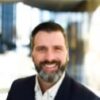
1:30pm – 3:00pm
CIMA®, CPWA®, CIMC®, and RMA℠ Eligible
A key component of building individuals, teams, and firms that behave ethically is the sometimes elusive concept of culture. Conti-Brown introduces the idea of “cultural engineering,” or the practice of individuals and small groups exerting influence on the way that complex information is understood within larger organizations. Using examples from the financial services industry and from his (and others’) personal lives, Conti-Brown teaches participants that culture is about what individuals bring to the table and cannot be about platitudes and empty vision statements. Instead, culture is about the difficult and essential interaction between personal values and institutional identity.
Peter Conti-Brown
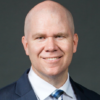
3:20pm – 4:50pm
CIMA®, CPWA®, CIMC®, and RMA℠ Eligible
Interpreting financial metrics to better understand the health of your business allows leaders to continue on a path towards optimal business results or redirect accordingly. This course will deliver insight into various metrics, what they mean and how they are used to make future business decisions to maximize organizational performance.
Learning Objectives:
Anthony Biniaris
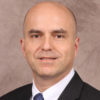
CFP®, CIMA®, CPWA®, CIMC®, and RMA℠ Eligible
What next for the capital markets? By using long-term historical data from his bestselling book, Stocks for the Long Run, Professor Siegel will describe the long term risks and returns of major assets classes, how their correlations change over time, how to determine the right valuation of the market, and the CAPE ratio methodology. Professor Siegel will also hazard a projection for equity and bond returns over the next several years.
Learning Objectives:
Jeremy Siegel

7:15am – 8:15am
Breakfast will be served at all SII hotel properties.
8:45am – 10:15am
(Also offered on Wednesday at 1:30pm)
Thriving at work, high life satisfaction, happiness and resilience all require the same capacity: the capacity to navigate difficult moments well. Our conversation considers research from the fields of Positive Psychology and Appreciative Inquiry, fields which examine who we are at our best as individuals, teams and organizations. We’ll explore tools and perspectives that enable us to handle inner conflict, difficult conversations and moments of extraordinary stress well. These are tools that bring mindful awareness to any one moment and change that moment into one of opportunity; opportunity in which we not only address the stressor directly, but leverage that very conflict to become more authentic, more rooted in our strengths and values, clearer about the road ahead and more of our better selves. In other words, better leaders. Attendees will leave with experience practicing mindful pausing, identifying one’s ideal self, and leveraging positive change in themselves and others in the most challenging moments.
Learning Objectives:
Maria Sirois

(Also offered Wednesday at 3:20pm)
Research from Google’s best-performing teams suggests that among many factors that contribute to the health of a team, the most important lever is the experience of “psychological safety” on the team. Drawing upon current research– from Google, MIT and other organizations — we will explore what psychological safety means for employees, why it’s so important, and what you, as leaders can do to create the conditions for it on your teams.
Though we may think we are creating the conditions for collaboration to occur, the truth is that, without awareness, we may inadvertently undermine the experience of safety team members have of you, and of the team. What’s at stake is a more collaborative team environment, as well as greater engagement and aliveness for all.
Learning Objectives:
Yael C. Sivi

CIMA®, CPWA®, CIMC®, and RMA℠ Eligible
(Also offered Wednesday at 1:30pm)
Confident, persuasive body language – and yes even charisma – can be broken down into its components and taught. In this session, participants will learn insights from psychology on body language and how it can build rapport and project confidence in order to persuade others. Through a series of interactive exercises, video analysis, and practice sessions, participants will see and experience the difference that persuasive body language makes. They will hone their abilities to read others more accurately, and to have greater choice in how they are being perceived. And, they will practice how to simultaneously project power, warmth, and presence.
Learning Objectives:
Lauren Hirshon

CFP®, CIMA®, CPWA®, CIMC®, and RMA℠ Eligible
(Also offered Monday at 3:20pm)
The US elections of both 2016 and 2018 have created a potentially massive shift in American policy, both domestic and global. The question now is how permanent the changes will become. In the international arena President Trump staked out positions radically different from those of the post-World War II “Washington Consensus,” that guided much of the world as “globalization” took hold and Emerging Nations—especially China– prospered. The result has been uncertainty for political and economic decision-makers worldwide. Will a “New World Order” of “economic nationalism” now follow, perhaps one that leaves lasting impact on the shape of trade relations for generations to come? Or will Trumpism result in only a brief deviation from the liberalization of trade (and global politics) of the recent past? This session will explore recent upheavals in the world economy that have led to the current challenge, focusing on the major geographic regions and their issues and problems. We will conclude with a consideration of potential outcomes for the years ahead, and what implications they hold for both US firms as well as its citizens in the era of President Trump. Participant discussion will be strongly encouraged.
Learning Objectives:
Paul Tiffany

CIMA®, CPWA®, CIMC®, and RMA℠ Eligible
(Also offered Wednesday at 1:30pm and 3:20pm)
The Herrmann Brain Dominance Instrument (HBDI™) is a 120-question diagnostic survey, the answers to which indicate an individual’s thinking style preferences. Our minds have preferred modes of operating that impact how we see the world, how we interpret what we see, and how we communicate with others who are also operating from their own preferred modes of thinking and speaking. Thinking preferences influence communication, decision-making, problem solving, and management styles. By understanding their thinking style preferences, participants will gain a new perspective of themselves and the people with whom they interact each day. In this HBDI session, a series of interactive exercises is used to get participants comfortable with the model, conversant about each of the 4 styles, and aware of the dangers of over-simplifying the process. This session offers a wide range of exercises and will choose a combination of exercises specific to each group’s needs. Participants will also explore when thinking styles are problematic. Through development of self-inventory, participants will learn about their own hot buttons and the hot buttons of others and develop strategies for addressing these situations in a constructive manner. This course will require a 120-question survey to be completed prior to the participants’ arrival.
Learning Objectives:
Anthony Palombit

CIMA®, CPWA®, CIMC®, and RMA℠ Eligible
(Also offered Wednesday at 1:30pm)
At the core of any organization’s performance are the decisions that leaders make…those financial, strategic, human resource, marketing and leadership decisions that in the end determine an organization’s performance. Thus, to understand how to improve decision-making is a truly fundamental issue. In this session, we will discuss a range of decision “traps” commonly observed in decision makers. These biases are widespread because they are in part derived from how the human brain operates. Drawing on the findings of recent research, this session will expose participants to decision biases through short exercises and offer ways to alleviate them. Issues to be covered are: understanding the problem; seeking non-confirming data; making a decision; and, building trust.
Learning Objectives:
Jim Austin

(Also offered Monday at 1:30pm and Wednesday at 1:30pm)
The Negotiation Workshop is fun and very interactive. It will utilize simulations to highlight key concepts and skills. Participants will conduct mock negotiations and then discuss what occurred. The workshop is intended for those who would like to improve their negotiation skills as well as those who are already accomplished negotiators.
Learning Objectives:
Eric Max

(Also offered Wednesday 3:20pm)
Organizational culture, a critical component for the success of strategy and organizational decision making, impacts how employees frame their organizational world, including their own performance, commitment and attitudes toward the workplace. Using a group exercise participants experience how culture impacts “objective” business data interpretation and decision making. In addition, through examples and clips we explore what is organizational culture, how it functions, and how it can be adjusted. This includes how meaning is infused into artifacts, the impact of leader behaviors as well as managing sub-cultures in large organizations. The session ends with an intriguing and symbolic puzzle activity that exemplifies the impact of culture on framing organizational decision making.
Learning Objectives:
Dafna Eylon

CIMA®, CPWA®, CIMC®, and RMA℠ Eligible
(Also offered Wednesday at 1:30pm)
Workplace interactions can create extraordinary engagement and vigor that allow people and organizations to thrive, or they can have the opposite effect. This workshop explores the difference between the two. Our interactions at work, however brief or extended they might be, have qualities that if better understood can allow us to harness the positive impacts of them. Gaining insights into these qualities is essential for us to perform at our best. We are social beings that require a connection; many argue that most of the work in organizations is conducted through informal methods and networks based on our connections. While communication is one way we connect, if done correctly it can bind us, or if done incorrectly it can alienate us. The workshop will help participants understand distinctions between communicating and connecting for results. Drawing from psychological and management research on positive emotions, relationships, and connections at work; participants will learn how to create and then harness high-quality connections for the benefit of all.
Learning Objectives:
Faisal Khan

CIMA®, CPWA®, CIMC®, and RMA℠ Eligible
(Also offered Wednesday at 1:30pm)
Today’s business environment is no longer described as having an “ebb and flow”, but rather a permanent “whitewater” condition. This increased speed of change has caused a movement from discrete-event strategic planning to more dynamic planning – the quarterly strategy “refresh”, for example. However, many organizations struggle with the ability to stay nimble to respond to rapid market changes because of a variety of factors. This session explores the common barriers to agility, discusses ways to create a culture of productive paranoia, and describes three concrete actions in achieving strategic agility.
Learning Objectives:
Kathy Pearson

(Also offered Wednesday at 3:20pm)
Nearly every businessperson agrees that to have a successful company you need a good strategy, yet few people have ever created a “Success Strategy” for their own lives. During the session attendees will do several personal workshops that will help them gain clarity on what they must do to create a more happy, balanced and successful life and career. This program has been taught to senior executives at major organizations around the world and at more than 90 colleges and universities in America.
Learning Objectives:
John Spence
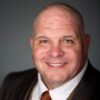
10:35am – 12:05pm
By emphasizing the importance of accounting data and managerial metrics on a firm’s performance, “Accounting for the Non-Financial Executive” is a workshop that allows non-financial executives to become familiar with basic accounting information and through the use of ratio analysis understand the linkage these tools can provide to understand financial statements. As a leader in your organization, having an understanding of accounting terminology and different measurements tools (i.e., ratio analysis and KPI’s) is crucial to understanding financial performance. This workshop will increase your ability to understand a basic financial statement, provide an introduction to ratio analysis and key performance indicators (i.e., KPT’s) in order to enhance understanding of the accounting tools used to make sound financial decisions.
Learning Objectives:
Mary Kay Scucci

CFP®, CIMA®, CPWA®, CIMC®, and RMA℠ Eligible
Central banks have come to be regarded as the “only game in town” for economic policy-making. But what are these curious institutions, where did they come from, and where are they going? This session analyzes these and related issues by providing a brief history of central banking and focusing on the ways that central banks today and in the future will dominate the landscape for banking and finance the world over. The focus will be on the U.S. Federal Reserve System, the European Central Bank (and its predecessors), and the People’s Bank of China.
Peter Conti-Brown

CFP®, CIMA®, CPWA®, CIMC®, and RMA℠ Eligible
Ideal for: Participants who want to improve their appreciation of and insights regarding the current political economy of the Peoples Republic of China, and the relationship between that nation’s recent economic expansion and prospects for the future of the United States of America.
The rise of China since the 1990s has been the most significant economic event in the world in recent times. However, the actions of the Administration of President Trump since 2016, as well as his own frequent outbursts on the relationship of our nation with China, have created great uncertainty about the future—including in financial markets. Today we appear to be at a crossroads about how we will respond as a nation in the coming years to China’s political and economic evolution. This elective session will first briefly review the remarkable rise of the Chinese economy from the rise of Mao in the mid-20th Century into the current era of the early 21st Century. We will focus on the historical roots of that transformation, and how these have shaped the current attitudes and perspectives of the Chinese leadership towards economic priorities, growth, and relations with its off-shore business entities. We will then turn specific attention to the prospects for future political-economic relations between the PRC and the USA as the “American Century” winds down and an aggressive new American President with a stated nationalist agenda takes the helm—while in China a transformative President appears determined to raise that country to global preeminence if not outright superiority over the US. Participants will be challenged to consider how the many benefits of “doing business with China” for American firms must be balanced against the ultimate ends and goals of that nation as they relate to the value proposition of the United States—which includes respect for democracy, free markets, a rules-based world order, and human rights– and its own ambitions in the decades ahead.
Learning Objectives:
Paul Tiffany

CFP®,CIMA®, CPWA®, CIMC®, and RMA℠ Eligible
This session will focus on our latest market and economic perspectives on the Emerging Markets. Emerging market equities posted significant gains +37.5% in US Dollar terms in 2017, only to disappoint investors in 2018. With the volatility in emerging market assets this year, investors wonder if the weakness will continue or if there is a potential for a comeback.
The 2018 emerging market underperformance has been driven primarily by the trifecta of a stronger US dollar, idiosyncratic country risk, and geopolitical headlines. Performance may gain momentum as these conditions, which are likely temporary, start to unwind. We believe the macro environment will stay supportive of risk assets and emerging equities remain poised for a comeback.
In our view, Emerging Markets remain a key driver of global growth over the longer term. Although, there will be differentiation at the country, sector, and, stock level, we continue to believe that exposure to the Emerging Markets across assets classes should be a critical part of investors’ strategic long-term asset allocation.
Learning Objectives:
Candice Tse

CFP®, CIMA®, CPWA®, CIMC®, and RMA℠ Eligible
Ideal for: General Audience
This year promises to bring many new emerging regulatory issues to financial services firms. A proactive approach to compliance in identifying and implementing sound business practices, policies and procedures to promote a good working relationship with industry regulators will be even more important in 2018. This course will focus on pending and current rulemaking that will impact the financial services industry, examination priorities for 2018 and best practices for interacting with many types of regulators).
Learning Objectives:
Jesse Hill, Joan Schwartz


CFP® Eligible
Ideal for: Participants who want to understand why ETFs are displacing mutual funds, improve their understanding of the ETF due diligence process, and learn to evaluate passive investments. If you’ve ever wondered how to choose among seemingly identical products, worried about ETF trading, scratched your head about tracking error, or wondered how a product costing 5 basis points can survive, this is the class for you. Buy-side due diligence teams, risk managers, wealth managers, and active equity and fixed income managers can all benefit.
Exchange-traded funds have grown enormously over the past decades, capturing market share from mutual funds, hedge funds, and separately managed accounts. One out of every five dollars in publicly available equity funds is now in ETFs, up from one in eight just five years prior, and zero twenty-five years ago. The active-to-passive trend is even starker, with active management losing ground every year since 2014.
As investors embrace passive management and the exchange-traded fund structure, fiduciaries can find themselves facing new questions. Often, simple rules of thumb such as looking for the fund with the highest asset level, lowest expense ratio, or highest daily inflows can lead to costly mistakes.
This session will cover the fundamentals of ETF due diligence, with case studies, lively lectures, and Q&A. Topics will include in-kind creation/redemption, which is the key differentiator between ETFs and mutual funds and the driver behind ETF’s competitive advantage; holding cost and risk analysis; an overview of exchange-traded product legal organization types, liquidity evaluation and trade analysis; and, most importantly, index construction as the most critical driver of long-term performance.
Learning Objectives:
Elisabeth Kashner

CFP®, CIMA®, CPWA®, CIMC®, and RMA℠ Eligible
Most financial professionals recognize that asset allocation, long a predicate of portfolio construction, dynamics, implementation, monitoring, and rebalancing, is a fundamental determinant of investment risk and return. However, many asset classes are highly correlated and respond to common sources of risk, return, correlation and other characteristics known as investment factors. Long understood as comprising the building blocks of investment performance in academia and the buy-side, factor-based investing is now becoming democratized and increasingly present and available in broader circles. This session will define factor-based investing, present evidence on the existence of factors in returns, and how factors, factor betas, and factor premia may be used to create portfolios and to assess investment performance. Covered will also be how factor-based investing relates to traditional active management, the “new” definitions of alpha and beta, implications for multi-asset class investing, the advent of smart-beta strategies as well as their implications for investing with alternatives.
Learning Objectives:
Christopher Geczy

CFP®, CIMA®, CPWA®, CIMC®, and RMA℠ Eligible
Economies and markets globally are impacted by the policy actions of the Federal Reserve. The FED has a dual mandate to maximize employment, subject to a constraint of keeping inflation low and steady. The FED monitors key variable related both to the job market and to inflation. We will analyze different gauges on the Federal Reserve’s “job market dashboard” and its “inflation dashboard.” The U.S. now exceeds ‘full employment’ as commonly defined and measured by the official unemployment rate. However, other metrics do not indicate truly full employment. We will show and analyze four forms of underemployment. We will discuss the possibility that there is still slack in the labor market that could account for the relatively slow wage growth the US economy is still generating.
Our analysis of the “inflation dashboard” will show that the FED monitors a variety of metrics and that these are crucial for its decisions about interest rates. These decisions have a strong influence on financial markets. We will discuss the recent path and forecasts for inflation, in light of the FED’s targets.
This session will engage participants by analyzing the future of various industries’ job markets, in an economy increasingly impacted by global forces, automation and robotics, machine learning, disruption, and the gig economy. Prime learning objectives include deepening an understanding regarding key questions for the future of the job market
Learning Objectives:
Jeffrey Rosensweig

CFP®, CIMA®, CPWA®, CIMC®, and RMA℠ Eligible
Review and discuss the basics of exchange rate market: terminology, institutional features, common contracts, and market size and structure. Introduce concepts such as effective exchange rates, cross currency rates and dealing with pricing in a dealer market. Link the FX markets with the offshore money markets and summarize equilibrium market view for current and future exchange rates, interest rates and expected future macroeconomic conditions. This session lays the groundwork for understanding how the FX markets work.
Learning Objectives:
Gordon Bodnar

CFP®, CIMA®, CPWA®, CIMC®, and RMA℠ Eligible
Ideal for: Non-operations professionals in the securities industry.
This course provides a broad and basic perspective of brokerage operations covering Global Markets across a range of products, functions and services. Topics will include the life cycle of securities transactions from execution through clearance/settlement and custody, as well as critical client service and operations risk management functions. Operations will be discussed from both a macro industry perspective and the inner workings of individual broker/ dealers.
Learning Objectives:
Thomas Gooley
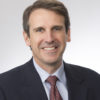
CFP®, CIMA®, CPWA®, CIMC®, and RMA℠ Eligible
In theory, retirement begins on the day an employee receives their last paycheck—that is also the day that they begin to look at their investments differently. The paycheck is, in essence, an investment safety net and one that no longer exists for a retiree. Shifting demographics, elongated lifespans, increasing inflation expectations, the decline in pensions, and secular changes in the interest rate environment are just some of the issues forcing the financial services industry to redraw the playbook for retirement income. This session will explore the differences between the accumulation and distribution phases of the investing cycle. It will detail the history of retirement cash flow generation and introduce a new, more diversified approach using a wide array of investment solutions available in today’s marketplace. With more than $2.5 trillion in self-managed 401k assets preparing for rollover in the next decade, professional advice has never been more needed. For many, particularly the underfunded, it could be the difference between eating caviar or cat food in retirement.
Learning Objectives:
Bryan Piskorowski

CFP®, CIMA®, CPWA®, CIMC®, and RMA℠ Eligible
Ideal for: General Audience
There is currently considerable debate about market structure reform and both the industry and the regulators are weighing in. This session will focus on how and why we arrived at this current market structure and explore why reforms are being discussed and how this all connects to increasing investor confidence. The session will provide background on how the market structure evolved to what it is today and perhaps more importantly, why it evolved that way, what were the intentions of the legislation and rule making that shaped it and what were some important unintended consequences.
Learning Objectives:
Theodore R. Lazo, Larry Leibowitz
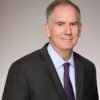

CLE®, CIMA®, CPWA®, CIMC®, and RMA℠ Eligible
This session will simulate a real securities arbitration. Participants will watch a condensed proceeding based on common investor disputes, with experienced trial attorneys playing the roles of Claimant’s and Respondents’ counsel. A discussion of case, and of best practices to prevent litigation and client disputes, will follow. Participants will receive a one-page background fact document prior to attending this session.
Learning Objectives:
, Michael Ungar, Allison Patton

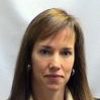
CFP®, CIMA®, CPWA®, CIMC®, and RMA℠ Eligible
Ideal for: Participants who would like to get familiar with private equity industry, learn the anatomy of a deal, industry trends, secondary purchases, co-investments, and understand the sources of value creation and the drivers of return of private equity funds.
Private equity is an asset class that has potential to generate sustainable long-term returns for its investors. Although it is relatively a new asset class that has some unique characteristics that may not be familiar to investors, it has become a key component of many investors’ portfolios. In this entry-level elective session, we will cover the structure of a private equity fund, and describe how a private equity fund operates and governs its portfolio companies. We will then talk about the changing trends in the private equity industry. We will also discuss whether and how a private equity fund creates value in a changing macroeconomic landscape.
Burcu Esmer

CFP®, CIMA®, CPWA®, CIMC®, and RMA℠ Eligible
This session will focus on risk management practices for the financial services industry. The discussion will include why risk management exists, the lessons learned from significant events and what environment is required for an effective risk management program. Other topics will include impact of biases and incentives, accountability for risk management, positioning risk management within the organization.
Learning Objectives:
Adam Rosenthal

CFP® Eligible
Ideal for: Customer-facing industry professionals or any participants interested in understanding regulatory controls designed to protect investors.
Whether you are a financial advisor or an individual investor, it is important to understand how regulations protect investors and contribute to the trust in and stability of our markets. This session provides a broad foundation of regulations that address current investor protection issues. It will be presented as an interactive jeopardy game, exploring five key categories:
Learning Objectives:
Kurt Wachholz

CFP®, CIMA®, CPWA®, CIMC®, and RMA℠ Eligible
This course will help you understand the dependable sources of “tax alpha”. The goal is to not disturb pre-tax returns while achieving higher after-tax returns. You may be familiar with loss-harvesting, but what about gain harvesting? We will also explore the many ways to invest in the S&P 500, gold and MLPs. Wall street’s creativity has spawned multiple ways to get exposure. Surprisingly different investment products dedicated to the same asset class may produce the same pretax return, but the after-tax returns can vary greatly.
Robert Gordon
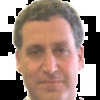
CFP®, CIMA®, CPWA®, CIMC®, and RMA℠ Eligible
This session will give you a baseline explanation of what is called the “Fiduciary Standard of Care”, the history and evolution, what it means, how it compares to commercial standards including the broker/dealer standard of care, and the effect on our industry. Attention will be given to the latest developments in federal and state regulatory bodies. Although interaction and questions are encouraged the presentation is not designed to debate the DOL rule, the SEC role, nor SIFMA’s position.
Learning Objectives:
Skip Schweiss
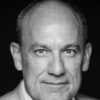
CFP®, CIMA®, CPWA®, CIMC®, and RMA℠ Eligible
Ideal for: All industry professionals or anyone interested in learning about the US Social Security system.
With limited other resources, clients are turning to their financial professionals for advice on Social Security. Advisors who can provide education and guidance on Social Security as part of the retirement planning process are more likely than their peers to retain retiring clients, grow share of wallet and gain referrals.
Learning Objectives:
Robert Kron

12:30pm – 1:15pm
(35 capacity for each year, limit 2 per person)
Gary DeWaal – a Special Counsel at Katten Muchin Rosenman and, in 2018, recognized as a “Go-To Thought Leader” by the National Law Review and a “Cryptocurrency, Blockchain and Fintech Trailblazer by the National Law Journal – will address the evolution of cryptoassets and blockchain technology since the mining of the genesis bitcoin during January 2009. He will concentrate on current applications of blockchain technology; distinguish between decentralized and private ledgers, as well as proof of work vs. proof of stake and other consensus mechanisms; discuss the different types of digital tokens and their legal implications both in the US and abroad; review pending legislative initiatives relevant to blockchain technology; and apply his crystal ball to the future. In his review, he will address current regulatory issues at both the CFTC and SEC.
Gary DeWaal

(35 capacity for each year, limit 2 per person)
Today’s workplace requires a high degree of collaboration. Nearly everybody works on a team, and most organizations have to partner with others on multiple strategic initiatives. Leveraging teamwork is essential to success. But the fact is that most teams fail to reach their full potential. This session is about that cold, hard truth, and what can be done about it. We will discuss the latest research about forming, guiding, and inspiring teams to reach peak performance.
Takeaways include:
By the end of this session, you will know how to:
1) Create a team structure that energizes members and maximizes productivity;
2) Diagnose sources of misalignment, such as conflicting styles, as they arise,
3) Encourage specific that boost group performance.
Mario Moussa

(35 capacity for each year, limit 2 per person)
Financially well-designed business plans often run aground in the implementation phase because of the difficulty in bringing people on board. The phrase “culture eats strategy for breakfast” has been widely used by CEOs to describe this program. But what exactly is “culture” and what role does it play in business operations. Participants in this session will: Gain familiarity with the latest theories about culture, and come to recognize the various manifestations and impacts of culture in corporate settings; Appreciate why corporations, as social groupings, not only rapidly develop distinctive culture that resist change, but are often internally riven by culture differences; Learn about the interconnections between the culture inside corporations and the external cultures at the local, national and international levels in which corporations are embedded. Culture is not only about the past and resistance to change, however, it is also itself a source of inspiration for change. Participants in the session will begin to explore the forces that affect the motion of culture through space and time, coming to appreciate the ways in which corporate leaders can affect the future trajectories of culture.
Greg Urban

(35 capacity for each year, limit 2 per person)
Using quiz questions, we will engage and explore how to avoid Motivation and Engagement Pitfalls. The questions invite discussion and create opportunities to delve into topics of interest. Participants are encouraged to share their own experiences and insights.
Dafna Eylon

1:30pm – 3:00pm
(Also offered on Wednesday at 8:45am)
Thriving at work, high life satisfaction, happiness and resilience all require the same capacity: the capacity to navigate difficult moments well. Our conversation considers research from the fields of Positive Psychology and Appreciative Inquiry, fields which examine who we are at our best as individuals, teams and organizations. We’ll explore tools and perspectives that enable us to handle inner conflict, difficult conversations and moments of extraordinary stress well. These are tools that bring mindful awareness to any one moment and change that moment into one of opportunity; opportunity in which we not only address the stressor directly, but leverage that very conflict to become more authentic, more rooted in our strengths and values, more clear about the road ahead and more of our better selves. In other words, better leaders. Attendees will leave with experience practicing mindful pausing, identifying one’s ideal self, and leveraging positive change in themselves and others in the most challenging moments.
Learning Objectives:
Maria Sirois

CFP®, CIMA®, CPWA®, CIMC®, and RMA℠ Eligible
Public policy always impact economies and financial markets. Such impacts are particularly pronounced now. The uncertainty surrounding trade, fiscal, geopolitical, and monetary policy is contributing to heightened market volatility.
The Tax Reform package has been the major economic initiative of the Trump administration and Congress. We will analyze its economic and financial impacts. The cuts likely contributed to the “Trump bump” in economic growth and the stock market (until the bear market this winter). However, the tax cuts are increasing the Federal Government deficit, which was already forecast to grow significantly. The extent of the impact is uncertain, so we will discuss possible scenarios. Deficits imply government borrowing, achieved by issuing more Treasury Securities. Thus, deficits add into a Gross Federal Debt that already exceeds $22 trillion. If the deficits do increase over the next decade, will the US government debt become so large that people will not want to hold it? If so, bond prices would decline, market interest rates would rise, and the sustainability of the debt will become a crucial issue.
Further, government deficits can exacerbate trade deficits. This seems to be the case in the U.S now. These deficits have led President Trump to turn toward protectionist trade policy. We will analyze the impact on business and markets of new trade policies. The ultimate goal of this elective aims to engage SII participants in an exploration of the U.S. fiscal, trade, and financial future.
Learning Objectives:
Jeffrey Rosensweig

CFP®, CIMA®, CPWA®, CIMC®, and RMA℠ Eligible
Modern Portfolio Theory and the case it makes for diversification have long been foundations for investing. However, since the financial crisis, disparate asset class performances have brought investors to question the benefits of asset allocation. This session will break down the performance drivers in the current market cycle and lay out the global growth story, making the case for continued asset diversification. It will examine the issues currently facing globally allocated portfolios and survey several strategies and techniques investors can use to mitigate these problems. Topics will include strategic versus tactical allocation, active versus passive investing, and the power of rebalancing, among others. The goal of this elective is to give the participant a broader and deeper understanding of the forces affecting asset allocation portfolios in the 21st century and to make the case that diversification still works—that it’s not “different this time”.
Learning Objectives:
Bryan Piskorowski

CIMA®, CPWA®, CIMC®, and RMA℠ Eligible
(Also offered Wednesday at 8:45am)
Confident, persuasive body language – and yes even charisma – can be broken down into its components and taught. In this session, participants will learn insights from psychology on body language and how it can build rapport and project confidence in order to persuade others. Through a series of interactive exercises, video analysis, and practice sessions, participants will see and experience the difference that persuasive body language makes. They will hone their abilities to read others more accurately, and to have greater choice in how they are being perceived. And, they will practice how to simultaneously project power, warmth, and presence.
Learning Objectives:
Lauren Hirshon

CIMA®, CPWA®, CIMC®, and RMA℠ Eligible
This program addresses the major innovations that will impact not just the business world but the entire world in the next decade. These are not “what if” ideas, but trends, technologies and innovations that exist today that will have a direct impact on you, your firm and your clients. John created this session through his personal interactions with many of the world’s top thought leaders who are actually driving this change. Some of the topics include:
The information delivered will greatly challenge the audience to examine their businesses today on how they will have to be positioned in the coming years to continue to be successful in the industry.
John Spence

CIMA®, CPWA®, CIMC®, and RMA℠ Eligible
(Also offered Wednesday at 8:45am)
At the core of any organization’s performance are the decisions that leaders make…those financial, strategic, human resource, marketing and leadership decisions that in the end determine an organization’s performance. Thus, to understand how to improve decision-making is a truly fundamental issue. In this session, we will discuss a range of decision “traps” commonly observed in decision makers. These biases are widespread because they are in part derived from how the human brain operates. Drawing on the findings of recent research, this session will expose participants to decision biases through short exercises and offer ways to alleviate them. Issues to be covered are: understanding the problem; seeking non-confirming data; making a decision; and, building trust.
Learning Objectives:
Jim Austin

CIMA®, CPWA®, CIMC®, and RMA℠ Eligible
(Also offered Wednesday at 8:45am and 3:20pm)
The Herrmann Brain Dominance Instrument (HBDI™) is a 120-question diagnostic survey, the answers to which indicate an individual’s thinking style preferences. Our minds have preferred modes of operating that impact how we see the world, how we interpret what we see, and how we communicate with others who are also operating from their own preferred modes of thinking and speaking. Thinking preferences influence communication, decision-making, problem solving, and management styles. By understanding their thinking style preferences, participants will gain a new perspective of themselves and the people with whom they interact each day. In this HBDI session, a series of interactive exercises is used to get participants comfortable with the model, conversant about each of the 4 styles, and aware of the dangers of over-simplifying the process. This session offers a wide range of exercises and will choose a combination of exercises specific to each group’s needs. Participants will also explore when thinking styles are problematic. Through development of self-inventory, participants will learn about their own hot buttons and the hot buttons of others and develop strategies for addressing these situations in a constructive manner. This course will require a 120-question survey to be completed prior to the participants’ arrival.
Learning Objectives:
Anthony Palombit

CIMA®, CPWA®, CIMC®, and RMA℠ Eligible
The session focuses on the question of how to sustain a successful enterprise during periods of disruptive change. It draws on case studies and recent examples to discuss the challenges of managing discontinuous changes in an industry. The instructor will share frameworks that enable a systematic approach to evaluating and managing the different types of changes confronting a firm both from strategic and organizational perspectives.
Learning Objectives:
Rahul Kapoor
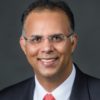
Leadership & Followership is based on the notion that leadership is relational, that people must accept the leadership of the person in charge in order for him or her to influence, to guide, to lead. The session focuses on leader-follower relationships—both healthy and unhealthy—and, using real-world examples, analyzes what characterizes good followers and good leaders and how leaders and followers aid and hinder one another efforts.
This session will involve lots of discussion and drawing on participant experience.
Learning Objectives:
Gregory Shea

Ideal for: General Audience
Have you ever been on a group project in which everyone worked hard but no one got along? How about a group in which everyone got along but no one worked hard? How do you turn a group into a team with positive group dynamics and high productivity? This session will help you identify the key factors that can help turn a group into a team. In addition, by participating in a survival simulation, you create a live “case study” and opportunity to reflect on the ways in which you typically contribute to and participate in group work. By the end of the session, you will have a better understanding of how you work in a group and make a group work.
Learning Objectives:
Anne Greenhalgh

(Also offered Monday at 1:30pm and Wednesday at 8:45am)
The Negotiation Workshop is fun and very interactive. It will utilize simulations to highlight key concepts and skills. Participants will conduct mock negotiations and then discuss what occurred. The workshop is intended for those who would like to improve their negotiation skills as well as those who are already accomplished negotiators.
Learning Objectives:
Eric Max

CIMA®, CPWA®, CIMC®, and RMA℠ Eligible
(Also offered Wednesday at 8:45am)
Workplace interactions can create extraordinary engagement and vigor that allow people and organizations to thrive, or they can have the opposite effect. This workshop explores the difference between the two. Our interactions at work, however brief or extended they might be, have qualities that if better understood can allow us to harness the positive impacts of them. Gaining insights into these qualities is essential for us to perform at our best. We are social beings that require a connection; many argue that most of the work in organizations is conducted through informal methods and networks based on our connections. While communication is one way we connect, if done correctly it can bind us, or if done incorrectly it can alienate us. The workshop will help participants understand distinctions between communicating and connecting for results. Drawing from psychological and management research on positive emotions, relationships, and connections at work; participants will learn how to create and then harness high-quality connections for the benefit of all.
Learning Objectives:
Faisal Khan

CIMA®, CPWA®, CIMC®, and RMA℠ Eligible
(Also offered Wednesday at 8:45am)
Today’s business environment is no longer described as having an “ebb and flow”, but rather a permanent “whitewater” condition. This increased speed of change has caused a movement from discrete-event strategic planning to more dynamic planning – the quarterly strategy “refresh”, for example. However, many organizations struggle with the ability to stay nimble to respond to rapid market changes because of a variety of factors. This session explores the common barriers to agility, discusses ways to create a culture of productive paranoia, and describes three concrete actions in achieving strategic agility.
Learning Objectives:
Kathy Pearson

This session will focus on developing an outside-in strategy as a key driver of the marketing proposition, the idea that firms succeed when they deliver value to customers. We will discuss the marketing planning process which begins with a strategic overview of the 5Cs (Company, Customers, Competitors, Collaborators and Context), proceeds through a process of understanding and evaluating customers (Segmentation, Targeting and Positioning) to ultimately arrive at a marketing strategy. We will discuss what it means to be customer-centric and to develop a “value monopoly,” as well as how to build a brand that customers trust and prefer.
Learning Objectives:
Patti Williams

CIMA®, CPWA®, CIMC®, and RMA℠ Eligible
Ideal for: General Audience
To succeed, businesses have to understand their customers – from determining their wants and needs to delivering customer satisfaction and maintaining relationships. What drives their decisions? What motivates them to take (or not take) action? This presentation will discuss practical, science-based insights to better understand customer behavior, and how to use those insights to drives success. From avoiding decision quicksand to how people process information, I’ll share tools to shape the choice context, increase influence, and drive customer growth.
Learning Objectives:
Jonah Berger
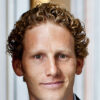
This session focuses on three cases in which General Rapp led a collaborative effort to build a vision needed to energize and guide needed change in three very different and complex organizations. General Rapp was the commander (CEO/President) of each organization – all of whom knew he would only be with them for a finite period of time and thus they could hold their breath and outwait him. The first was a 5200 strong Corps of Engineers division that controlled all waterways, flood control, hydropower, environmental restoration, and regulation from St. Louis north and west to the Puget Sound (14 US states.) The second was the 17500 strong organization he led in Afghanistan where we needed to rapidly change the mindset from growth to drawdown and put all logistics and transportation infrastructure in place. The third was the 1100 strong US Army War College where he needed to change the culture of an academic institution. Most corporate and public entity visions he has seen are palliatives that say little and drive less. General Rapp found that, if well-constructed and attuned to the work force, a vision can be extremely powerful in creating organizational change. Discussing those cases and the resulting lessons are the focus of the session.
William Rapp
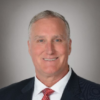
CFP®, CIMA®, CPWA®, CIMC®, and RMA℠ Eligible
This course will focus on the increasing power of women in the global economy and how we can close the gender gap. Research has demonstrated that women continue to be a powerful economic force and by investing in them, we better families, communities, and society. Regardless of where you invest in women, one finding is consistent, that when you invest in women, we create a multiplier effect that impacts markets around the world.
This seminar will assess the gender gaps that exist globally. In particular, we will highlight the gender gaps in Japan, the US and the Emerging Markets and examine the gaps across four major areas:
In this session, we will explore how bringing more women into the labor force and providing female business owners with better access to capital, can substantially boost GDP growth and per capita income. Additionally, our research has also shown that as economic opportunities for women improve, countries can reap the benefit of a ‘double dividend’ as women are more likely to use their earnings and increased bargaining power to buy goods and services that improve the family’s welfare. This should create a virtuous cycle as female spending supports the development of human capital, which in turn will fuel economic growth in the years ahead. At the same time, economic growth should continue to bolster gender and income equality which is critical to sustainable development.
Learning Objectives:
Candice Tse

1:30pm – 4:50pm
(Also offered on Monday)
Recent academic work on the science of innovation and creativity has revealed a new, evidence-based approach to coming up with new ideas and solving problems – but it is one that is not widely known outside of academia! In this session, we will first discuss these new approaches to innovating, including a number of simple tips and common mistakes. Then, in the second half of the session, you will play the Breakthrough Game, which allows you to apply the tools you learned to use in a fun and engaging way. Playing the Breakthrough Game, participants not only solve one particular challenge as a team but also, crucially, learn how to drive the innovation process in the future. You will come out of this session with short-term takeaways that will make your future idea generation sessions more productive, an actionable idea that you can pursue, and a general framework that you can use to solve problems and search for new opportunities.
Ethan Mollick

The session will focus on how leaders can build high flying teams that enable them to implement their strategies successfully, with special attention to the challenges of managing teams that are dispersed, diverse, digital and dynamic. We will introduce a tool for analyzing your own teams, the Team Effectiveness Pyramid, and work through how to use this tool to diagnose your teams and figure out how and where to intervene to make them stronger.
Learning Objectives:
Martine Haas

(Also offered on Monday)
This workshop will help strengthen your influence and persuasion skills — skills you need to win support for important initiatives, achieve organizational alignment, and implement strategies. Through a series of interactive discussions and role-plays, you will answer four key questions: What are the steps that led to buy-in? What is your communication style and how do you use to engage stakeholders? How do you make your ideas simple and compelling? How do you generate lasting commitment? The workshop content is drawn from the book The Art of Woo: Using Strategic Persuasion to Sell Your Ideas (Portfolio/Penguin), co-authored by G. Richard Shell and Mario Moussa.
Learning Objectives:
Participants will be asked to complete a survey and to read a chapter of “The Art of Woo” prior to attending this session.
Mario Moussa

3:20pm – 4:50pm
The objective of the session is to help the students understand the theoretical framework and practice of business model design and innovation. In particular, we introduce the theoretical development in business model research, the design elements of a business model as well as the value drivers of innovative business models. In addition, we examine the process through which innovative business models can be designed and identify challenges entrepreneurs and managers faced in the business model innovation.
Learning Objectives:
Henry Han

Why are so many people suffering from change fatigue? What might we do differently as individuals and as leaders to help ourselves and others cope better with a world dominated by change? How might we approach organizational change differently, so it succeeds more often, i.e., produces sustainable, desired patterns of behavior?
Learning Objectives:
Gregory Shea

CIMA®, CPWA®, CIMC®, and RMA℠ Eligible
(Also offered Monday at 3:20pm)
In this experiential session, participants will discover techniques to improve their collaborative relationships. The session explores practical, applicable skills for increasing the ability to effectively communicate with others — to hear and be heard. The atmosphere of the session is lighthearted and fun, utilizing activities developed from traditional and non-traditional training methodology, including exercises based in improvisational theater training. No one is singled out — all exercises are performed in large or small groups. The facilitator creates a comfortable atmosphere in which all participants are supported and encouraged. Every exercise has a specific objective and will be debriefed to maximize its application to the participants’ business-place needs.
Learning Objectives:
Bobbi Block

CIMA®, CPWA®, CIMC®, and RMA℠ Eligible
(Also offered Monday at 1:30pm)
Do you prefer to communicate directly, emphasize facts over feelings? Are you more animated in your delivery? Do you take your listener’s feelings into account? Do you like to think first and then speak? Whatever your preference, what impact does your communication style have on others in the workplace whether one-on-one or in group meetings? How can you make the most of assets and downplay the liabilities of your communication style? Complete the HRDQ What’s My Communication Style questionnaire as pre-work, and this session will help you identify your dominant communication style and give you the opportunity to see your style in action so that you can make the most of assets and downplay liabilities. By the end of the session, you will have a greater appreciation of the impact of communication style on interpersonal relationships and results.
Learning Objectives:
Anne Greenhalgh

In this session we explore implications of the Confucian tradition for understanding business organizations and consider practical examples of Confucian management. On a Confucian view, the business organization can be viewed as a team. Management functions much like the leader of a symphony orchestra or an improvisational jazz ensemble, facilitating its members in creating a good that brings members together as a community. Credible authority for managerial leadership emerges from its role in identifying and fostering a distinctive team good. We will contrast the Confucian view of management with certain western views, which see the function of management as arranging incentives to induce optimal performance among employees.
Alan Strudler, Tae Wan Kim


As the world becomes more interconnected, firms must form links with other firms to remain competitive. This session focuses on the creation of a strategic network, which is a set of interconnected alliances. Key decision factors in forming networks are discussed and the relative efficacy of the timing of entry, involvement in the network creation process, and resource commitment to the network are explored as success drivers from network participation.
Learning Objectives:
Harbir Singh
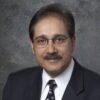
(Also offered Wednesday at 8:45am)
Research from Google’s best-performing teams suggests that among many factors that contribute to the health of a team, the most important lever is the experience of “psychological safety” on the team. Drawing upon current research– from Google, MIT and other organizations — we will explore what psychological safety means for employees, why it’s so important, and what you, as leaders can do to create the conditions for it on your teams.
Though we may think we are creating the conditions for collaboration to occur, the truth is that, without awareness, we may inadvertently undermine the experience of safety team members have of you, and of the team. What’s at stake is a more collaborative team environment, as well as greater engagement and aliveness for all.
Learning Objectives:
Yael C. Sivi

In a rapidly changing environment, businesses have new opportunities to redefine their value proposition, re-imagine their organization, and develop structures, system and processes to achieve new outcomes. However, leading transformational change requires navigating disruptive innovation and the new business models they create. In this session, we will explore the basic principles of disruptive innovation. Through an interactive lecture format, we will examine why organizations have trouble innovating and reacting to innovations. Participants will reflect on strategies to effectively incubate innovation, build teams that can operate in ambiguity, and cultivate a “start-up” mindset. We will use case studies from companies and leaders that have found success by becoming their own disruptors.
Learning Objectives:
Lauren Hirshon

(Also offered Monday at 3:20pm)
High performance requires effective execution and, for many organizations, change management. Unfortunately, major change efforts have a dismal track record. In multiple studies, highlighting the experiences of hundreds of companies initiating large-scale changes, the overwhelming results are poor. For example:
As the Harvard Business Review’s editor articulated so well in discussing why so many transformation efforts fail:
“…no business survives over the long term if it can’t reinvent itself. But human nature being what it is, fundamental change is often resisted mightily by the people it most affects: those in the trenches of the business. Thus, leading change is both absolutely essential and incredibly difficult” (Kotter 2007).
Learning Objectives:
Jim Austin

CFP®, CIMA®, CPWA®, CIMC®, and RMA℠ Eligible
Examine features of investment returns in global capital markets. Compare US equity performance with Developed Market equity and Emerging Market equity and different methods to invest such as ADRs, and ETFs. Examine size and return features of the global bond markets. Discuss impact of currency risk on foreign investments.
Learning Objectives:
Gordon Bodnar

CFP®,CIMA®, CPWA®, CIMC®, and RMA℠ Eligible
The 21st century has and will continue to see a revolution in the way we think about money. In this session, financial historian and legal scholar Peter Conti-Brown will provide an overview of what money is, where it comes from, and where it is going. He will focus on the costs associated with large-bill currency; what central banks make of Bitcoin and other kinds of decentralized, private currencies; what new regulatory approaches to fintech will mean; and what entrepreneurial options you should watch in 2020 and beyond.
Peter Conti-Brown

CIMA®, CPWA®, CIMC®, and RMA℠ Eligible
(Also offered Wednesday at 8:45am and 1:30pm)
The Herrmann Brain Dominance Instrument (HBDI™) is a 120-question diagnostic survey, the answers to which indicate an individual’s thinking style preferences. Our minds have preferred modes of operating that impact how we see the world, how we interpret what we see, and how we communicate with others who are also operating from their own preferred modes of thinking and speaking. Thinking preferences influence communication, decision-making, problem solving, and management styles. By understanding their thinking style preferences, participants will gain a new perspective of themselves and the people with whom they interact each day. In this HBDI session, a series of interactive exercises is used to get participants comfortable with the model, conversant about each of the 4 styles, and aware of the dangers of over-simplifying the process. This session offers a wide range of exercises and will choose a combination of exercises specific to each group’s needs. Participants will also explore when thinking styles are problematic. Through development of self-inventory, participants will learn about their own hot buttons and the hot buttons of others and develop strategies for addressing these situations in a constructive manner. This course will require a 120-question survey to be completed prior to the participants’ arrival.
Learning Objectives:
Anthony Palombit

Learning Objectives:
Karen Reivich

CIMA®, CPWA®, CIMC®, and RMA℠ Eligible
Ideal for: General audience
It’s hard to get people to do something or care about something if they can’t remember what you told them. Whether it’s externally to customers or internally to employees and co-workers, we’re constantly communicating messages and ideas. How can we communicate more effectively with our clients, helping them understand the suggestions we’re making and the value we provide? How can we make sure our boss, or employees, remember our suggestions? This session will provide a framework for making ideas stick. Tips and tricks to avoid the curse of knowledge, communicate more effectively, and drive people to take action.
Learning Objectives:
Jonah Berger

Innovation and entrepreneurship are increasingly driving economies around the world. The purpose of this session is to put you in the shoes of the innovator/entrepreneur. Doing so will be useful in both leading innovative organizations and in participating in the innovation economy, such as in an enabling or even in a regulatory role. We will cover three aspects of mastering innovation in this session: (1) generating and evaluating innovative ideas; (2) creating value from innovation; and (3) capturing value from innovation.
David Hsu

(Also offered Wednesday at 8:45am)
Organizational culture, a critical component for the success of strategy and organizational decision making, impacts how employees frame their organizational world, including their own performance, commitment and attitudes toward the workplace. Using a group exercise participants experience how culture impacts “objective” business data interpretation and decision making. In addition, through examples and clips we explore what is organizational culture, how it functions, and how it can be adjusted. This includes how meaning is infused into artifacts, the impact of leader behaviors as well as managing sub-cultures in large organizations. The session ends with an intriguing and symbolic puzzle activity that exemplifies the impact of culture on framing organizational decision making.
Learning Objectives:
Dafna Eylon

Everyone in strategy is saying that the key to growth, even just survival, is via continuous and rapid innovation. But the real key to growth via profitable innovation is in fact the strategic development and management of your knowledge: the insights of your employees, your technology, your core competences, and your intellectual property. This session will provide you with the foundation from which to prosper in this, the knowledge age. It will give you specific tools and frameworks to map your critical knowledge, design a program to strategically develop your knowledge, and then exploit it to successfully grow your organization.
Learning Objectives:
Martin Ihrig
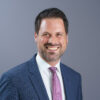
(Also offered Wednesday at 8:45am)
Nearly every businessperson agrees that to have a successful company you need a good strategy, yet few people have ever created a “Success Strategy” for their own lives. During the session attendees will do several personal workshops that will help them gain clarity on what they must do to create a more happy, balanced and successful life and career. This program has been taught to senior executives at major organizations around the world and at more than 90 colleges and universities in America.
Learning Objectives:
John Spence

7:15am – 8:15am
Breakfast will be served at all SII hotel properties.
8:45am – 10:15am
Many organizations function in the same way they have for decades, expecting that the next generation of workers and clients will simply accept long-standing corporate values and norms. While it may be tempting to think “this is just the way we do things around here”, such a mindset lacks the imagination needed to create an organizational culture where the youngest generation of workers will wish to contribute their best—and where clients across generations will be engaged. In this presentation, we will discuss the values and worldviews members of different generations bring to the workplace and why. We will discuss the elements of a collaborative environment that engages staff across generations, and we will explore how you, as leaders, can help co-create an organization, and a team culture, that will more effectively engage contributors, leaders, as well as clients.
Learning Objectives:
Yael C. Sivi

10:35am – 12:05pm
CIMA®, CPWA®, CIMC®, and RMA℠ Eligible
In this session we will delve into the implications of the Artificial Intelligence revolution on financial services – from providing predictive client insight to, providing advisors scale and engagement tools for multigenerational clients, to addressing the $257 billion burden of financial regulations to picking the perfect team, Rob will provide both a high-level view and actionable ideas to use AI within your firm.
Rob Stanich

CIMA®, CPWA®, CIMC®, and RMA℠ Eligible
Significant technologies always have unintended consequences, and their effects are never neutral. A world of ubiquitous data, subject to ever more sophisticated collection, aggregation, analysis, and use, creates massive opportunities for both financial gain and social good. It also creates dangers in areas such as privacy and discrimination, as well as simple hubris about the effectiveness of management by algorithm. This session addresses the legal, policy, and ethical dimensions of big data, predictive analytics, and related techniques. It then examines responses—both private and governmental—that may be employed to address these concerns.
Learning Objectives:
Kevin Werbach

A brief history and lessons learned in our mission to organize the world’s information to make it universally accessible and useful to everyone.
Richard Piña
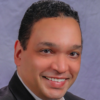
CIMA®, CPWA®, CIMC®, and RMA℠ Eligible
The incidence of reported cybersecurity breaches has grown by more than 66% in just the past three years. And, as new technologies continue to emerge, it’s become increasingly challenging to stay ahead of cyber criminals. This is especially relevant for the financial services industry as we rely on the latest digital innovations to optimize the customer experience. Chad Renfro, Head of Enterprise Cybersecurity at Fidelity Investments, offers his insight on the changing dynamics of the global cyber threat landscape and recommendations on the preventative measures you can take to keep your business, your customers and yourselves cyber safe.
Chad Renfro

CIMA®, CPWA®, CIMC®, and RMA℠ Eligible
It seems that almost every day we hear reports of another data breach impacting a financial company, hospital, government agency or educational institution. Data breaches are often the result of an escalating series of non-technical failures which include lack of preparation, lack of adequate employee training designed to increase awareness of risky behavior and incomplete or non-existent evaluations and protections involving vendors and other third parties who receive valuable data from the organization. Through this practical and interactive session participants will learn about the following: (1) the importance of a proactive approach to cyber security; (2) state and federal law issues associated with responding and reacting to a security incident; and (3) litigation and regulatory investigations arising from data breaches. We will conclude with hypothetical incidents where the participants will be able to apply what they learn.
Learning Objectives:
Matthew Meade

CIMA®, CPWA®, CIMC®, and RMA℠ Eligible
Blockchain has been hailed as the biggest development since the internet, but how can firms embrace this promising yet risky new technology? This session will help managers make strategic decisions about blockchain. Participants will gain insight into considering whether their firm needs blockchain, how it might impact their existing business, and how to make strategic choices for its implementation.
Saikat Chaudhuri

12:30pm – 1:15pm
(35 capacity for each year, limit 2 per person)
In an interactive discussion format, John Spence will share his perspectives on global business trends and initiatives from his work within the US and businesses around the world.
John Spence

(35 capacity for each year, limit 2 per person)
| P Purpose |
| E Experiential Frames |
| R Range of Options |
| C Contrary Views |
| E External Future Forces |
| P Productive Paranoia |
| T Trust |
| I Internal Culture |
| V Vigilance |
| E Experimentation |
Effective leaders recognize they must carefully manage both the external and internal environment. They inspire, provide clarity of purpose, seek diversity of thought and contrary views, and build a culture of trust. Leaders also develop a keen awareness of external forces and turn threats into opportunities by building an organizational capability of adaptability. In short, leaders build a PERCEPTIVE organization that is poised to achieve and maintain sustainable positive results.
After the session participants will be able to:
Kathy Pearson

1:30pm – 3:00pm
Ideal for: willingness to engage, openness to learning and a degree of vulnerability
Self-reflection is a powerful tool in helping us understand ourselves and our leadership capacities. Indeed, even the most seasoned and senior leaders often discover humbling realizations when deliberately reflecting upon their leadership experiences. When thoughtfully considered, such revelations can serve to strengthen us as leaders going forward. As such, this interactive session will challenge participants to think about themselves and their leadership abilities beyond their professional and personal successes, to include those experiences that may not necessarily make their highlight reel. To further gain from practicing self-reflection, participants also will engage in peer feedback. Finally, we will discuss implications for effecting ethical leadership from what we learn about ourselves and others.
Learning Objectives:
Olenda Johnson

Courage is a powerful key leadership characteristic, irrespective of one’s formal role. It requires engagement and acting in support of purpose, while in the face of concern, worry or fear. In organizations we want to be courageous, to do what we believe is right and have positive impact, while still acting in pursuit of achieving the organization’s vision. Courage means navigating without a pre-existing roadmap and is an ability that can be learned. Knowing why and when courageous actions are important promotes being proactive.
In this session, initial steps are formulated to help create a clearer sense of personal priorities regarding where and how one would like to take courageous organizational action(s). Through organizational examples and short exercises, participants identify where they would like to act more courageously and how to do so including questioning the status quo, taking risks, supporting others, stepping into the unknown, and managing uncertainty,
Learning Objectives:
Dafna Eylon

What is the most important thing for living a happier life, even in financial services? What about for building a higher-performing team?
Expanding on one of SII’s most popular sessions, this new deeper dive into happiness and team dynamics can improve your life both personally and professionally. Attendees will learn:
All attendees will receive free memberships to a special online site so you can continue applying what you learned after you leave Wharton, and share it with your families and teams.
Andrew Bernstein

3:20pm – 4:50pm
As organizations become more complex and global, many senior leaders struggle to “think globally but act locally”. At the heart of this challenge is the need to understand the enterprise system, and cascade that understanding throughout the organization. This session explores the barriers to “enterprise thinking” and breaking down organizational silos. The participants are then given various concepts and tools to promote a stronger enterprise mindset, including those that address clarity, alignment, culture and accountability.
Learning Objectives:
Kathy Pearson

7:00pm – 9:00pm
Sponsored by Broadridge Financial Solutions, Inc.
Join fellow SII 2019 participants for a night of networking and fun. Dinner and drinks will be served. Casual attire is appropriate for this reception (including jeans).
Location: XFINITY Live!
7:15am – 8:15am
Breakfast will be served at all SII hotel properties.
8:45am – 10:00am
CFP®,CIMA®, CPWA®, CIMC®, and RMA℠ Eligible
A new Congress convenes in 2019, returning split government to Washington. The new democratic-led House is expected to hold aggressive oversight hearings into the Trump administration’s policies. At the same time, the administration will continue to assert its regulatory authority in a number of areas, including expanding and increasing tariffs on imports; reducing the scope and effectiveness of the Affordable Care Act; imposing and enforcing new immigration restrictions; reducing the availability of Medicaid and other “safety net” programs; and rolling back industry-specific regulations. In addition, the SEC has proposed new “broker conduct” regulations, while the DOL is considering another look at its prior proposal.
Andy Friedman, an expert in political and legislative affairs, will address these matters in his 2019 presentation. Among other things, he will discuss:
Along the way, Andy will consider how each of these items is likely to affect taxes, the economy, specific economic sectors, and the markets in 2019 and beyond. In addition to these insights, Andy will provide strategies that investors and financial advisors can consider to take advantage of (or protect against) market effects and volatility arising from these initiatives, as well as specific strategies for investment, wealth transfer, and retirement planning.
Andrew Friedman
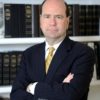
10:00am – 11:00am
Sponsored by Fidelity Clearing & Custody Solutions
When Sarah Robb O’Hagan was starting out as a marketing associate with the Virgin Group, her CMO abruptly left, creating a vacuum in the department. After identifying a lack of leadership, Sarah drafted a 30-page marketing proposal, slipped it under the company President’s door, and immediately got promoted. Sarah’s career has taught her innumerable lessons about succeeding in life and business, but the most important is this: You don’t get promoted for just showing up and doing your job—you have to get out of line to deliver more for the team and stand out.
Sarah will outline why giving is receiving, how problem solving is the single most important thing you can do to get ahead, why you need to take risks and “crash more”—using failure to fuel personal growth—and how to amplify your unique strengths to create growth runways.
Sarah Robb O’Hagan
